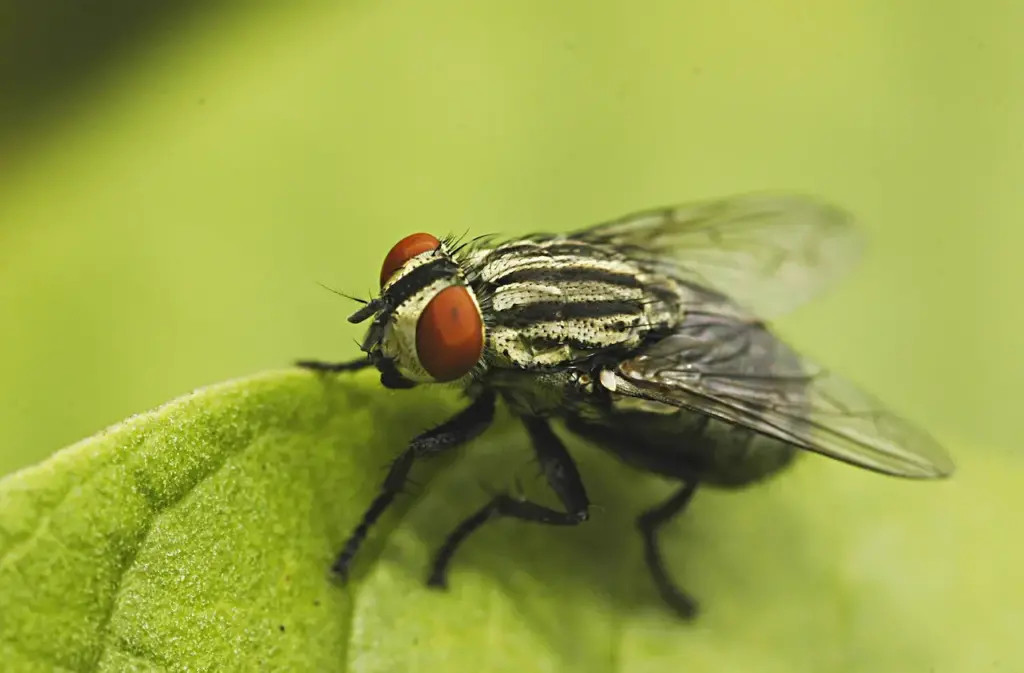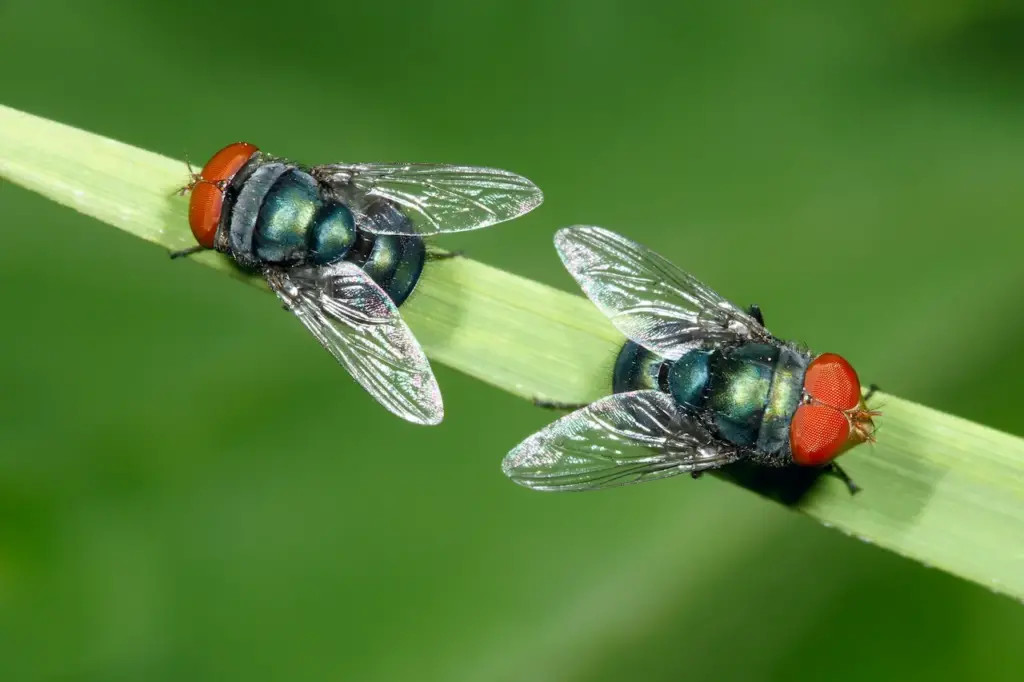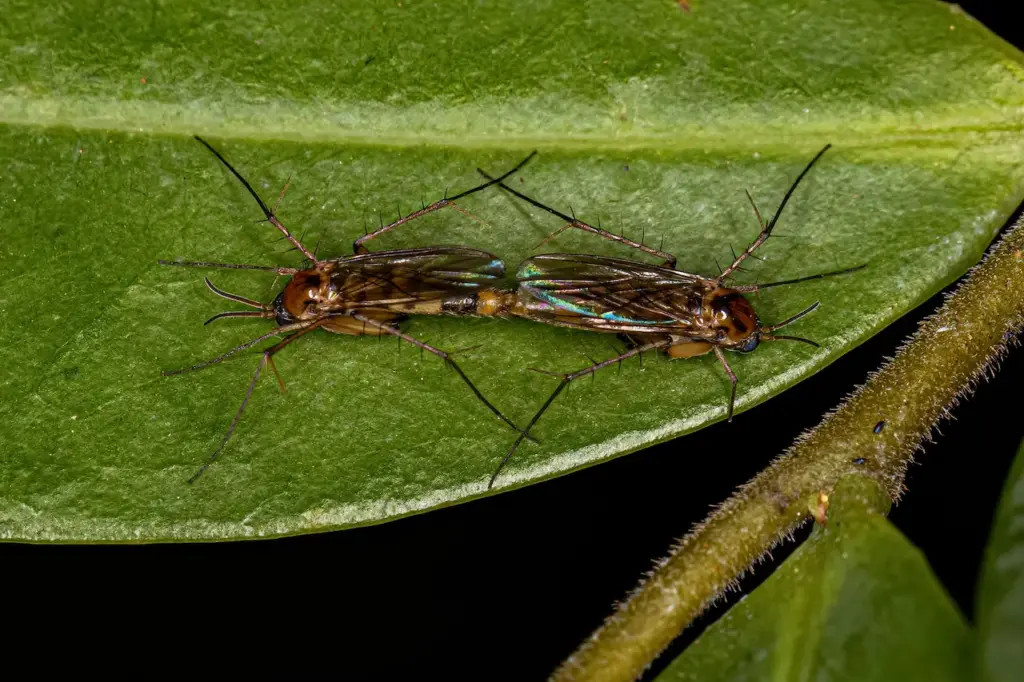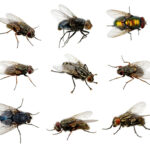Flies are a common nuisance, but what eats house flies and keeps their populations in check? Flyermedia.net explores the diverse range of predators that rely on these insects as a food source, highlighting their role in the ecosystem and how understanding these relationships can aid in pest control and support a healthier environment. Discover how this knowledge can assist you in maintaining cleaner and more sustainable surroundings, reducing reliance on chemical interventions.
Table of Contents
- Introduction: The Circle of Life and the House Fly
- Avian Predators: Birds That Feast on Flies
- Nocturnal Hunters: How Bats Consume Thousands of Flies
- Eight-Legged Trappers: Spiders and Their Fly-Catching Skills
- Amphibious Eaters: Frogs, Toads, and Their Sticky Tongues
- Masters of Camouflage: Praying Mantises and Their Fly Diet
- Aerial Acrobats: Dragonflies and Their Predatory Prowess
- Aquatic Consumers: Fish That Snack on Flies
- Reptilian Hunters: Lizards, Chameleons, and Their Fly-Catching Techniques
- Other Insect Predators: Beetles, Wasps, and More
- The House Fly’s Diet: What They Eat Before Being Eaten
- Ecological Significance: Why Flies Matter in the Food Chain
- Integrated Pest Management: Using Natural Predators to Control Fly Populations
- FAQ: Frequently Asked Questions About Fly Predators
- Conclusion: Embracing the Balance of Nature
1. Introduction: The Circle of Life and the House Fly
What Animals Eat House Flies, and why should we care? House flies are a ubiquitous presence, often seen as pests buzzing around our homes and businesses. However, these insects are also a vital part of the food chain, serving as a crucial food source for a diverse array of predators. Understanding what eats house flies is essential for appreciating the delicate balance of nature and developing effective, sustainable pest management strategies. At Flyermedia.net, we delve into the fascinating world of house fly predators, examining their roles in the ecosystem and how their presence impacts our environment.
2. Avian Predators: Birds That Feast on Flies
Which birds are most effective at controlling fly populations? Birds are among the most common and efficient predators of house flies. Several species specialize in catching these flying insects, making them valuable allies in natural pest control.
- Flycatchers: As their name suggests, flycatchers are adept at snatching flies mid-air. These birds have excellent eyesight and agile flight, allowing them to easily capture their prey. Species like the Eastern Phoebe and Great Crested Flycatcher are common in North America and frequently feed on flies.
- Swallows: Swallows are aerial insectivores, meaning they primarily eat insects caught while flying. These birds are incredibly graceful and can consume large numbers of flies each day. Barn Swallows and Tree Swallows are particularly effective at controlling fly populations around farms and open areas.
- Martins: Similar to swallows, martins are also skilled at catching flying insects. Purple Martins are known for their ability to consume vast quantities of insects, including flies, mosquitoes, and other pests. Attracting martins to your property can significantly reduce fly populations.
- Swifts: Swifts are among the fastest flying birds, capable of catching insects with incredible speed and precision. Chimney Swifts are common in urban areas and frequently feed on flies and other flying insects.
- Chickens and Poultry: Domesticated birds like chickens, turkeys, and ducks also eat flies. These birds forage for insects in gardens and pastures, helping to control fly populations in agricultural settings.
These avian predators play a crucial role in regulating fly populations naturally. Encouraging these birds through habitat creation and conservation efforts can be an effective strategy for managing flies without resorting to chemical pesticides. For more insights on supporting bird populations, visit flyermedia.net.
3. Nocturnal Hunters: How Bats Consume Thousands of Flies
How do bats use echolocation to hunt flies in the dark? Bats are highly efficient nocturnal predators of house flies. A single bat can consume hundreds or even thousands of insects in a single night, making them invaluable in controlling fly populations.
- Echolocation: Bats use echolocation to navigate and hunt in the dark. They emit high-pitched sounds and listen for the echoes to create a “sound map” of their surroundings. This allows them to detect and capture even the smallest flying insects, including house flies.
- Species: Several bat species are particularly adept at catching flies. The Little Brown Bat, Big Brown Bat, and Mexican Free-tailed Bat are common in North America and frequently feed on flies and other insects.
- Habitat: Bats often roost in caves, trees, and buildings, emerging at dusk to hunt for insects. Providing suitable roosting habitats can encourage bats to inhabit your property and help control fly populations.
- Benefits: Bats are not only effective predators of flies but also consume other pests like mosquitoes, moths, and beetles. Their presence can significantly reduce the need for chemical pest control.
According to research from Bat Conservation International, a single colony of bats can consume tons of insects each year. Encouraging bat populations through conservation efforts and habitat creation can be a highly effective and eco-friendly way to manage fly populations.
 Big Brown Bat Eating a Fly Big Brown Bat Eating a Fly
Big Brown Bat Eating a Fly Big Brown Bat Eating a Fly
4. Eight-Legged Trappers: Spiders and Their Fly-Catching Skills
What types of spiders are most effective at catching house flies? Spiders are another important predator of house flies, using a variety of techniques to capture their prey.
- Web-Building Spiders: Orb-weaver spiders create intricate webs to trap flying insects. When a fly becomes ensnared in the web, the spider quickly immobilizes it with venom and wraps it in silk for later consumption.
- Jumping Spiders: Jumping spiders are active hunters that stalk and pounce on their prey. These spiders have excellent eyesight and can jump several times their body length to capture flies and other insects.
- Crab Spiders: Crab spiders are ambush predators that blend in with their surroundings, waiting for unsuspecting flies to come within striking distance. They can be found on flowers, leaves, and bark, where they lie in wait for their prey.
- Wolf Spiders: Wolf spiders are ground-dwelling hunters that actively pursue their prey. These spiders are fast and agile, making them effective at catching flies and other insects.
Spiders play a crucial role in controlling fly populations in various habitats. While some people may find them unsettling, spiders are beneficial predators that help maintain ecological balance. According to a study by the University of Basel, spiders consume an estimated 400-800 million tons of insects each year.
5. Amphibious Eaters: Frogs, Toads, and Their Sticky Tongues
How do frogs and toads use their tongues to catch flies? Frogs and toads are opportunistic predators of house flies, using their long, sticky tongues to capture insects as they fly by.
- Sticky Tongues: Frogs and toads have specialized tongues that are covered in a sticky substance. When a fly comes within range, they flick out their tongues with incredible speed and accuracy, ensnaring the insect.
- Larval Stage: Tadpoles, the larval stage of frogs and toads, also consume fly larvae in the water. This helps to control fly populations in aquatic environments.
- Habitat: Frogs and toads are often found in gardens, ponds, and wetlands, where they feed on flies and other insects. Providing suitable habitat for these amphibians can help to reduce fly populations naturally.
- Nocturnal Hunters: Many frog and toad species are nocturnal, meaning they are most active at night when flies are also active. This makes them particularly effective predators of house flies.
Frogs and toads are valuable allies in natural pest control. Encouraging their presence in your yard or garden can help to keep fly populations in check without the need for chemical pesticides.
 Green Tree Frog Eating a Fly Green Tree Frog Eating a Fly
Green Tree Frog Eating a Fly Green Tree Frog Eating a Fly
6. Masters of Camouflage: Praying Mantises and Their Fly Diet
How do praying mantises use camouflage to catch flies? Praying mantises are fascinating predatory insects known for their camouflage and ambush hunting techniques. They are also effective predators of house flies.
- Camouflage: Praying mantises have excellent camouflage, blending in with their surroundings to avoid detection by prey. They can be found in gardens, fields, and forests, where they lie in wait for unsuspecting insects.
- Ambush Predators: Praying mantises are ambush predators, meaning they sit perfectly still and strike out rapidly to grasp flies and other insects that come within range. Their forelegs are equipped with sharp spines that help them to hold onto their prey.
- Diet: Praying mantises eat a variety of insects, including flies, mosquitoes, grasshoppers, and caterpillars. They are voracious predators and can consume large numbers of insects each day.
- Benefits: Praying mantises are beneficial insects that help to control pest populations in gardens and agricultural settings. Encouraging their presence can reduce the need for chemical pesticides.
According to research from the University of California, praying mantises can significantly reduce pest populations in gardens and farms. Providing suitable habitat for these insects can be an effective strategy for natural pest control.
7. Aerial Acrobats: Dragonflies and Their Predatory Prowess
What makes dragonflies such effective predators of house flies? Dragonflies are aerial predators known for their speed, agility, and keen eyesight. They are also highly effective at catching house flies.
- Keen Eyesight: Dragonflies have exceptional eyesight, allowing them to spot flies and other insects from a distance. Their eyes are composed of thousands of individual lenses, giving them a wide field of vision and excellent depth perception.
- Agile Flight: Dragonflies are incredibly agile fliers, capable of hovering, darting, and changing direction with ease. This allows them to capture flies and other insects in mid-air.
- Nymphs: Dragonfly nymphs, the larval stage of dragonflies, are also predators of fly larvae in aquatic environments. They feed on mosquito larvae, fly larvae, and other small aquatic organisms.
- Benefits: Dragonflies are beneficial insects that help to control pest populations in gardens, ponds, and wetlands. Encouraging their presence can reduce the need for chemical pesticides.
Dragonflies are valuable allies in natural pest control. Creating a dragonfly-friendly habitat by providing ponds or water features can help to attract these beneficial insects to your property.
8. Aquatic Consumers: Fish That Snack on Flies
Which types of fish eat flies that fall into the water? Fish are opportunistic predators of house flies that end up on the water’s surface. Several species will readily consume flies as part of their diet.
- Trout: Trout are known for their willingness to eat insects that fall into the water. They often feed on flies, mayflies, and other insects that are blown onto the surface.
- Catfish: Catfish are bottom-feeders but will also consume insects that they find on the surface. They are opportunistic predators and will eat a variety of foods, including flies.
- Bass: Bass are predatory fish that actively hunt for their prey. They will eat flies and other insects that they find on the surface of the water.
- Betta Fish and Goldfish: Even smaller fish like betta fish and goldfish will eat flies if they land in their tanks or ponds. They are opportunistic feeders and will consume a variety of insects.
Fish can help to control fly populations in aquatic environments. Adding fish to ponds or water features can be an effective way to reduce fly populations naturally.
9. Reptilian Hunters: Lizards, Chameleons, and Their Fly-Catching Techniques
How do lizards and chameleons use their tongues to catch flies? Lizards and chameleons are effective predators of house flies, using a variety of techniques to capture their prey.
- Lizards: Fast-moving lizards like anoles and swifts are adept at snatching up flies. They have excellent eyesight and can quickly capture flies and other insects that come within range.
- Chameleons: Chameleons use their long, sticky tongues to grab flies and other insects. Their tongues can extend up to twice their body length, allowing them to capture prey from a distance.
- Iguanas: Larger lizards like iguanas may also eat flies in addition to their regular diets. They are opportunistic feeders and will consume a variety of insects.
- Habitat: Lizards and chameleons are often found in gardens, forests, and deserts, where they feed on flies and other insects. Providing suitable habitat for these reptiles can help to reduce fly populations naturally.
Lizards and chameleons are valuable allies in natural pest control. Encouraging their presence in your yard or garden can help to keep fly populations in check without the need for chemical pesticides.
 Chameleon Catching a Fly Chameleon Catching a Fly
Chameleon Catching a Fly Chameleon Catching a Fly
10. Other Insect Predators: Beetles, Wasps, and More
What other insects prey on house flies and their larvae? In addition to the predators already mentioned, several other insects also prey on house flies and their larvae.
- Beetles: Some species of beetles, such as rove beetles and ground beetles, are predators of fly larvae. They feed on the larvae in soil, manure, and other breeding sites.
- Wasps: Certain types of wasps, such as parasitic wasps, lay their eggs inside fly larvae. When the wasp larvae hatch, they consume the fly larvae, killing them.
- Ants: Ants are opportunistic predators that will feed on fly larvae and adult flies. They often carry the larvae back to their nests to feed their colonies.
- Other Flies: Some species of flies, such as robber flies, are predators of other flies, including house flies. They capture their prey in mid-air and feed on their bodily fluids.
These insect predators play a crucial role in regulating fly populations in various habitats. Encouraging their presence through habitat creation and conservation efforts can be an effective strategy for managing flies without resorting to chemical pesticides.
11. The House Fly’s Diet: What They Eat Before Being Eaten
What do house flies eat, and how does their diet affect their predators? House flies are opportunistic feeders, consuming a wide variety of organic matter. Understanding their diet can help in managing their populations and protecting their predators.
- Liquid and Semiliquid Substances: House flies primarily feed on liquid or semiliquid organic substances. They prefer sugary substances like nectar, fruit juices, and honeydew.
- Decaying Matter: House flies also feed on decaying matter, including garbage, manure, and animal feces. They use their proboscis, a straw-like mouthpart, to suck up liquids.
- Disease Transmission: While feeding, house flies can pick up germs and bacteria that can cause diseases in people and animals. This makes them one of the most dangerous disease carriers worldwide.
- Control Measures: Reducing access to food sources, such as keeping garbage cans tightly sealed and cleaning up animal waste, can help to control house fly populations.
By understanding the diet of house flies, we can take steps to limit their food sources and reduce their populations. This not only helps to control these pests but also protects the predators that rely on them as a food source.
12. Ecological Significance: Why Flies Matter in the Food Chain
Why are house flies important in the ecosystem, despite being pests? Despite being considered pests, house flies play important ecological roles both as prey and in recycling nutrients.
- Food Source: House flies are a major food source sustaining birds, bats, spiders, and other insectivores worldwide. Their abundance and high reproduction rate make them excellent prey.
- Nutrient Recycling: By feeding on waste and carrion, house flies recycle nutrients back into the ecosystem. This breaks down organic matter and enriches the soil.
- Pollination: Some flies pollinate flowers just like bees. Their visits transfer pollen between plants.
- Ecological Balance: Understanding the ecological role of flies helps us appreciate their importance in maintaining a balanced ecosystem.
While we may consider them pests, house flies are a vital part of the food chain and play a crucial role in recycling nutrients. Recognizing their ecological significance can help us develop more sustainable pest management strategies.
13. Integrated Pest Management: Using Natural Predators to Control Fly Populations
How can integrated pest management strategies help control fly populations naturally? Integrated Pest Management (IPM) is a comprehensive approach to pest control that focuses on using a variety of methods to manage pest populations while minimizing the use of chemical pesticides. Encouraging natural predators is a key component of IPM.
- Habitat Creation: Providing suitable habitat for natural predators, such as birds, bats, spiders, frogs, and lizards, can help to control fly populations naturally. This includes planting native trees and shrubs, creating ponds or water features, and providing roosting sites for bats.
- Biological Control: Introducing natural predators to an area can help to control fly populations. This can include releasing parasitic wasps, ladybugs, or other beneficial insects.
- Sanitation: Reducing access to food sources, such as keeping garbage cans tightly sealed and cleaning up animal waste, can help to control fly populations.
- Monitoring: Regularly monitoring fly populations can help to identify potential problems early and take appropriate action.
- Education: Educating the public about the benefits of natural pest control can help to promote the use of IPM strategies.
By implementing IPM strategies, we can effectively manage fly populations while minimizing the use of chemical pesticides. This not only protects the environment but also promotes a healthier ecosystem. For more information on IPM strategies, visit flyermedia.net.
14. FAQ: Frequently Asked Questions About Fly Predators
1. What is the most effective natural predator of house flies?
Bats and birds are among the most effective natural predators of house flies, consuming large quantities of these insects daily.
2. How can I attract more fly predators to my yard?
Provide habitats such as birdhouses, bat houses, ponds for frogs, and native plants to attract and support fly predators.
3. Are spiders beneficial for controlling fly populations?
Yes, spiders are excellent at catching flies, using webs or active hunting to reduce fly numbers around homes and gardens.
4. Do all birds eat flies?
No, but many birds, such as flycatchers, swallows, and martins, specialize in catching flies and other flying insects.
5. Can fish help control fly larvae in ponds?
Yes, fish like trout, catfish, and bass will eat flies and their larvae that fall into the water, helping to manage fly populations.
6. How do praying mantises contribute to fly control?
Praying mantises are ambush predators that sit still and quickly capture flies and other insects that come within range.
7. What role do frogs and toads play in controlling flies?
Frogs and toads use their long, sticky tongues to catch flies and other insects, helping to control their populations in gardens and wetlands.
8. Are there any insects that eat fly larvae?
Yes, some beetles and wasps prey on fly larvae, helping to control fly populations at their breeding sites.
9. How does the diet of house flies affect their predators?
House flies consume various organic matter, making them a readily available food source for many predators.
10. What is Integrated Pest Management (IPM), and how does it relate to fly predators?
IPM is a comprehensive approach that includes encouraging natural predators to control fly populations while minimizing chemical pesticides, promoting a healthier ecosystem.
15. Conclusion: Embracing the Balance of Nature
Understanding what animals eat house flies is crucial for appreciating the delicate balance of nature and developing effective, sustainable pest management strategies. By encouraging natural predators and implementing IPM strategies, we can control fly populations while minimizing the use of chemical pesticides, protecting the environment, and promoting a healthier ecosystem. Visit flyermedia.net to discover more about sustainable pest control and how you can contribute to a balanced environment. Learn about creating habitats, identifying local predators, and the latest research in ecological pest management. Together, we can ensure a thriving environment for all species.
To learn more about aviation and related topics, visit flyermedia.net. Contact us at Address: 600 S Clyde Morris Blvd, Daytona Beach, FL 32114, United States. Phone: +1 (386) 226-6000.
